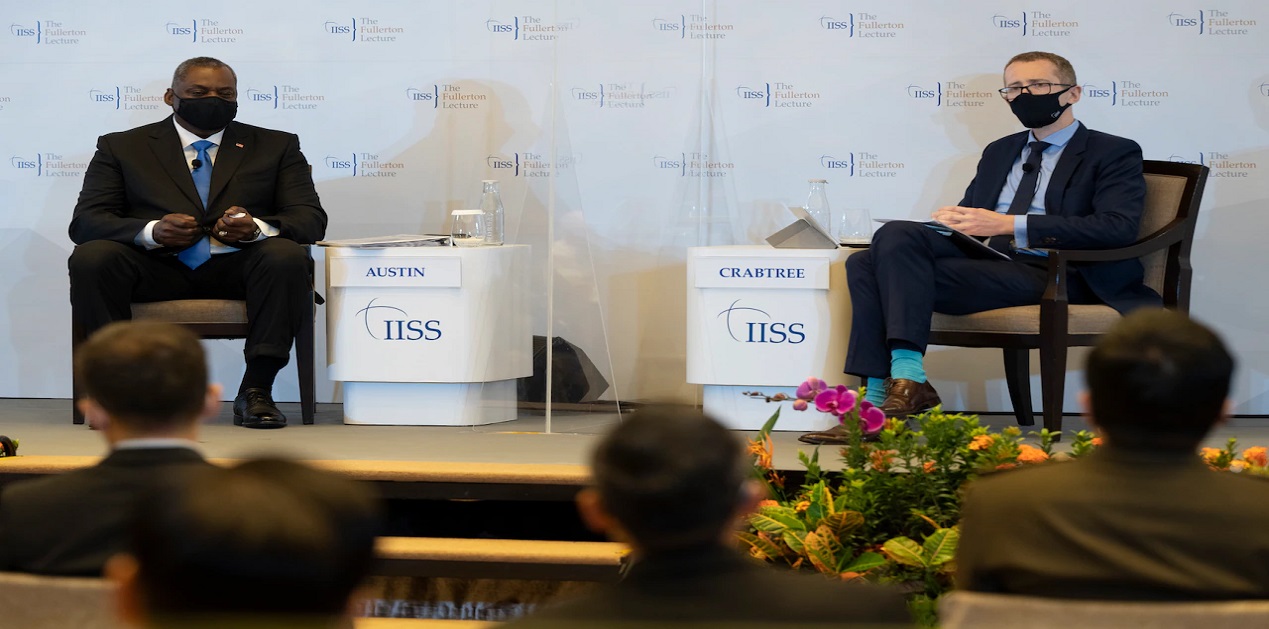A high-level US visit was due in Southeast Asia. The region felt having been neglected from the previous administration. Lloyd Austin, the Secretary of Defense visited Singapore, Vietnam and the Philippines in July. The choice of three specific countries reflects US’s strategy towards Southeast Asia and the larger Indo-Pacific. In Southeast Asia, the first step was to assure the allies of US commitment and to strengthen partnerships. Secretary Lloyd Austin delivered the 40th Fullerton lecture in Singapore which gave insights into US’s strategic thinking towards Southeast Asia and the larger Indo-Pacific. There was repeated emphasis on the importance of US allies and partnerships in the Indo-Pacific.
There have been mixed feelings from the Indo-Pacific about the new US administration- whether it reverts the Trump-era China policy to a more conciliary one or if the democracy- human rights narrative will be stressed upon. Seven months into office, the Biden administration’s Indo-Pacific policy is becoming clearer. The broad contours are set. It is going to be a continuation of the previous administration, minus the brazenness. The core idea Austin wanted to communicate was that the US is committed to Southeast Asia, and that Indo-Pacific is the area of focus. A ‘we’ll be there’ message was communicated. The Defense Secretary intended to reassure its allies of the US commitment. The title of the lecture was ‘The Imperative of Partnership’. Austin articulated that the contemporary security environment in the Indo-Pacific is too complex to be managed by a single country and therefore, the US needs its allies and partners.
One could sense a modest tone and tenor from the US administration, which was also almost necessary at this point in time, in this region. Just like Blinken in India, Austin also recognised how the US democracy has seen a rough tide, acknowledged racial tensions and that it has work to do in this regard. That does not imply that the US would abandon its values in the Indo-Pacific, or as the Secretary said “we will always lead with our values”. But one reads that these values would not be a deal-breaker. Pragmatism is evident.
The US security strategy in the Indo-Pacific would be naturally based on its allies. The emphasis on networked security becomes clearer in this context. Austin elaborated on this when he spoke about US-Japan naval exercises, and also Ex. Pacific Vanguard, both being high in complexity-“integrated high-end maritime operations.” Such military exercises would enhance interoperability amongst US allies “to keep aggression at bay.” Point to be noted that high interoperability is meant for US allies, and (perhaps) not for its partners.
Another instance of nuance is seen in the choice of adjectives when it comes to the Indo-Pacific. A not-so direct distinction between the Indo-Pacific and the Pacific Ocean was made. Austin qualified the Indo-Pacific as ‘stable, open and prosperous’, (he did not use the word ‘free’.) However, it was ‘free and open Pacific’, (minus the Indo). This is in fact not surprising because Biden administration’s general and also US naval focus has been on the Pacific, since this is where China’s military threat looms. US focus was always greater towards the Pacific.
Austin shed some light on what the US security would translate on ground. It would be fundamentally networked, and the network would coordinate and innovate, build capacities, share information and intelligence and also cooperate in the cyber and space domain- all of this under the concept of ‘networked deterrence’. He stated that the US focus would be deterrence with respect to grey-zone activities. The way to go about it is bolstering maritime domain awareness and capacity building. US actions to this end would be expected in the South China Sea. Over and above kinetics, the US is likely to undertake action in the hybrid or information warfare domains. A considerable emphasis on cyber-space security should be anticipated.
The larger message that Austin delivered is that the US will do the heavy lifting, but the Southeast Asian countries will have to board the bus. The US may have clearly expressed that they do not want to push countries into a binary choice, but the actual signalling is quite the contrary. One gets an impression that Austin wanted to communicate to ASEAN members that hedging cannot go on forever. As mentioned earlier, the US appeared modest (at face value), but also implied (throughout the lecture) that it is still the superpower. Southeast Asian leaders would have driven home the message that their hedging power is not infinite. On the question of what the US expects out of Southeast Asia, Austin took some time to answer it and repeated the point on the value and capabilities that its allies and partners bring, and that the US will work with allies and partners to protect commerce and sovereign rights. On the question of burden sharing (specifically naval) when it comes to Southeast Asia or smaller states, Austin stated that if a nation is capable of providing support, the US would welcome it and also facilitate, “but we have global partnerships.”
On the Myanmar question, Austin basically put the ball in ASEAN’s court, hinting no inclination for activism. But more importantly, it is to convey ASEAN of its first role as a regional crisis-manager. Another way to interpret this is that the Defense Secretary perhaps wanted to signal ASEAN of its inherent limitations. (On not resolving the Myanmar issue)
The decoupling from China is the fact of the day, and save for climate change, the US and China have little to cooperate. ASEAN members have always wished for a less-tense relationship between US and China, but perhaps some hard reality is about to hit. Speaking of hard reality, a significant part of Austin’s job seems to convey to Southeast Asia that strategic equations have changed. He did say that ASEAN continues to remain critical and that the US will remain engaged with the organisation, but in no uncertain terms it was communicated that the Quad would be the lynchpin of Indo-Pacific security. In the American scheme of things, ASEAN would be the regional or local manager, while the Quad is oriented to the wider region. Austin of course made it clear that ASEAN and Quad are complementary, with no room for conflict between them since both strive for a rules-based order.
On Taiwan, the US takes Xi Jinping’s statements seriously and would continue to enhance Taiwan’s capabilities to defend itself. For obvious reason, the ambiguity over US response to Taiwan’s takeover is maintained.
(The paper is the author’s individual scholastic articulation. The author certifies that the article/paper is original in content, unpublished and it has not been submitted for publication/web upload elsewhere, and that the facts and figures quoted are duly referenced, as needed, and are believed to be correct). (The paper does not necessarily represent the organisational stance... More >>
Image Source: https://media.defense.gov/2021/Jul/27/2002811461/1280/1280/0/210727-D-TT977-0086.JPG










Post new comment